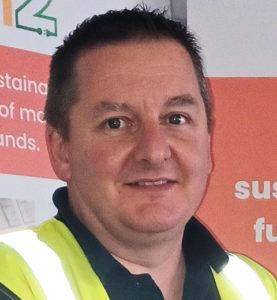Arval helps AkzoNobel cut fleet emissions by 47%
Paints firm AkzoNobel has reduced the overall CO2 output of its UK car fleet by 47% across an 18 month period, it has announced.
The firm, which operates 359 cars and 266 vans, made the move after a fleet strategy in 2022 aimed to contribute towards a global target of halving corporate CO2 by 2030 – and meet demand for electric vehicles (EVs) offered through its company car scheme.
Ben Edwards, consultant at Arval UK who managed the fleets, headed an exercise designed to integrate a range of electrified vehicle models onto the AkzoNobel choice list with an “aspiration to offer a strong selection of electric vehicles (EVs) and plug-in hybrids to drivers, alongside existing petrol and diesel options” – which Edwards said was “not necessarily easy” due to the economies of leasing – even if economical to operate.
Arval adopted a whole life cost approach, which provided an accurate overall view of fleet running costs, including servicing, maintenance, National Insurance and business fuel. This was then adopted across the whole AkzoNobel fleet in order to create new car choice lists.
As a result of the changes, the firm now has a fleet of 30 EVs, 52 hybrids and 40 plug-in hybrids, as well as an order bank of 138 vehicles, of which more than 90% are electrified.
AkzoNobel also took three electric vans on a trial basis using Arval’s Flex-EV, its electric mid-term rental product, with the objective of assessing how well they met operational requirements in real world conditions, including using telematics to collect relevant data.
Speaking about the deal, AkzoNobel’s UK Fleet Manager, Karl Allward, said: “We knew that we needed to increasingly electrify the fleet in order to meet sustainability and colleague satisfaction objectives. However, we wanted to make this a relatively natural process over time, rather than suddenly stipulating that drivers should drive certain types of cars and vans. To meet these objectives, we turned to Arval UK to help us create a template for future action.”
“We obviously need to electrify our light commercial vehicle fleet ahead of the 2030 government deadline, but as with cars, we want to adopt a gradual approach that will allow us to learn as much as possible over a period of time before adopting vans in quantity. Particularly, these vehicles are a good fit for our Dulux Decorator Centres, where they have localised delivery routes that are suitable for the range and payload eLCVs can offer today.”
“Colleagues have really bought into the idea of electric vehicles. Many are using plug-in hybrids as a stepping stone to full electrification, but there is rapidly growing enthusiasm for EVs.
“We’re supporting the electrification process with chargers installed at our offices and plans to increase them at our stores. Additionally, we have new reimbursement measures in place that make it as easy as possible to reclaim for home charging costs, something that is essential in our view.
“Our objective has been to make choosing an electrified car as easy as possible for employees, and that very much seems to be working.”
Image courtesy of AkzoNobel





































































































